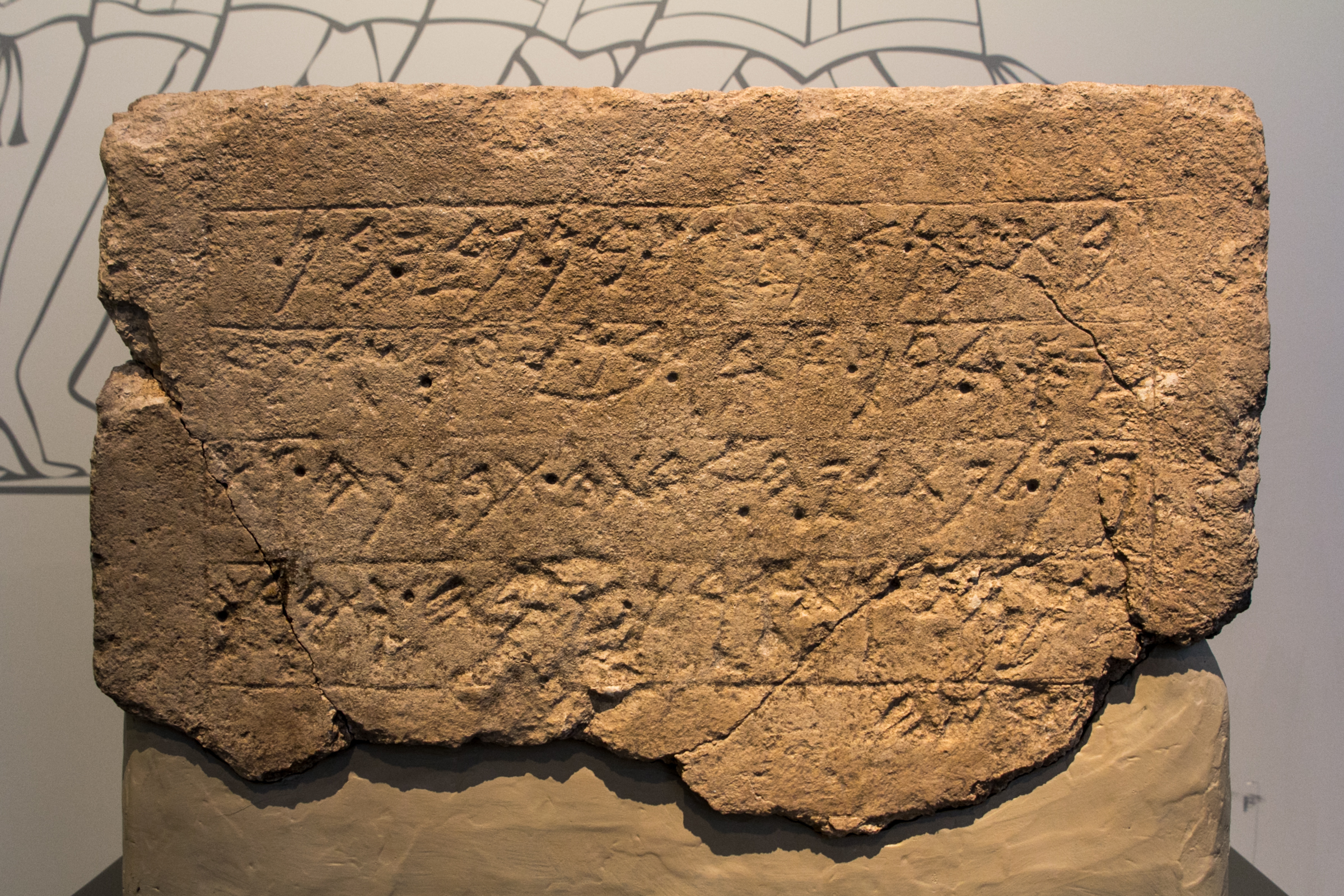|
Ekron
Ekron (Philistine: 𐤏𐤒𐤓𐤍 ''*ʿAqārān'', he, עֶקְרוֹן, translit=ʿEqrōn, ar, عقرون), in the Hellenistic period known as Accaron ( grc-gre, Ακκαρων, Akkarōn}) was a Philistine city, one of the five cities of the Philistine Pentapolis, located in present-day Israel. In 1957 Ekron was first identified with the mound of Tel Miqne (Hebrew) or Khirbet el-Muqanna (Arabic), near the depopulated Palestinian village of 'Aqir, on the basis of the large size of the Iron Age archaeological remains; the judgement was strengthened by the discovery in 1996 of the Ekron inscription. The tell lies west of Jerusalem, and north of Tell es-Safi, the almost certain site of the Philistine city of Gath, on the grounds of Kibbutz Revadim on the eastern edge of the Israeli coastal plain. In the Bible In the Hebrew Bible, Ekron is mentioned initially in : :''This is the land that still remains: all the regions of the Philistines and all those of the Geshuri ... [...More Info...] [...Related Items...] OR: [Wikipedia] [Google] [Baidu] |
Ekron Royal Dedicatory Inscription
The Ekron Royal Dedicatory Inscription, or simply the Ekron inscription, is a royal dedication inscription found in its primary context in the ruins of a temple during the 1996 excavations of Ekron.Gitin, Dothan, and Naveh, 1997, p. 1 It is known as KAI 286. It is incised on a rectangular-shaped limestone block, has five lines and 71 characters, and mentions Ekron, thus confirming the identification of the site, as well as five of its rulers, including Ikausu (Achish), son of Padi, who built the sanctuary. Padi and Ikausu are known as kings of Ekron from the late 8th- and 7th-century Neo-Assyrian Royal Annals.Gitin, Seymour (2003), Israelite and Philistine Cult and the Archaeological Record, in ''Symbiosis, Symbolism, and the Power of the Past'', p. 287, "Two of the five names of city's rulers mentioned in the inscription - Padi and Ikausu - appear in the Neo-Assyrian Annals as kings of ‘amqar(r)una, that is, Ekron, an Assyrian vassal city-state in the 7th century B.C.E. (Gitin ... [...More Info...] [...Related Items...] OR: [Wikipedia] [Google] [Baidu] |
Philistines
The Philistines ( he, פְּלִשְׁתִּים, Pəlīštīm; Koine Greek (Septuagint, LXX): Φυλιστιείμ, romanized: ''Phulistieím'') were an ancient people who lived on the south coast of Canaan from the 12th century BC until 604 BC, when their polity, after having already been subjugated for centuries by the Neo-Assyrian Empire, was finally destroyed by King Nebuchadnezzar II of the Neo-Babylonian Empire. After becoming part of his empire and its successor, the Achaemenid Empire, Persian Empire, they lost their distinct ethnic identity and disappeared from the historical and Archaeology, archaeological record by the late 5th century BC.. The Philistines are known for their Bible, biblical conflict with the Israelites. Though the primary source of information about the Philistines is the Hebrew Bible, they are first attested to in reliefs at the Temple of Ramesses III, Ramses III at Medinet Habu (temple), Medinet Habu, in which they are called (accepted as cogna ... [...More Info...] [...Related Items...] OR: [Wikipedia] [Google] [Baidu] |
Philistine
The Philistines ( he, פְּלִשְׁתִּים, Pəlīštīm; Koine Greek ( LXX): Φυλιστιείμ, romanized: ''Phulistieím'') were an ancient people who lived on the south coast of Canaan from the 12th century BC until 604 BC, when their polity, after having already been subjugated for centuries by the Neo-Assyrian Empire, was finally destroyed by King Nebuchadnezzar II of the Neo-Babylonian Empire. After becoming part of his empire and its successor, the Persian Empire, they lost their distinct ethnic identity and disappeared from the historical and archaeological record by the late 5th century BC.. The Philistines are known for their biblical conflict with the Israelites. Though the primary source of information about the Philistines is the Hebrew Bible, they are first attested to in reliefs at the Temple of Ramses III at Medinet Habu, in which they are called (accepted as cognate with Hebrew ); the parallel Assyrian term is , , or . Etymology The English te ... [...More Info...] [...Related Items...] OR: [Wikipedia] [Google] [Baidu] |



